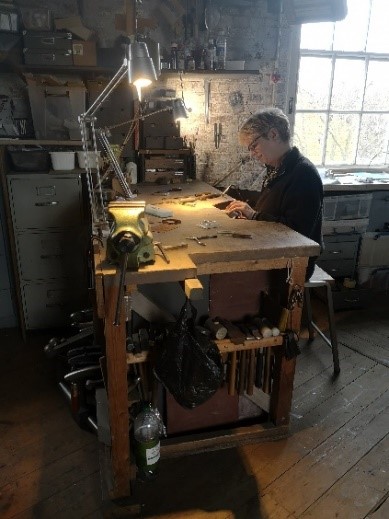The appointment of Simone ten Hompel as last year’s winning Glenmorangie Commission maker gave me the wonderful excuse to have a rummage around the Art & Design’s silver and metalwork store and displays to rediscover some of the wonderful pieces of contemporary metalwork we have in the collection.

The Museum’s Art & Design silver and metal store houses pieces of silverware and metalwork that span a period from the 15th century to the present day. Though many pieces are on display throughout the National Museum of Scotland, it is always nice to review what has been collected by my predecessors and colleagues over the years, and see first hand the skill and craftmanship that has gone into these exquisite works of art, craft and design.
Highlights within the store that I’m always drawn to include:
- a spectacular 19th century Silver Nef in the form of a four-masted galleon on four wheels, with a figurehead of Neptune holding his trident that was created in the German goldsmithing town of Hanau (A.1905.870)
- a beautiful Aesthetic Tea Set engraved with Japanese-inspired decoration by the Birmingham company Elkington and Co. from the 1880’s (A.1988.190 a-h)
- for the Discworld fans – a quite frankly Pratchett-esque Tazza with a silver-gilt stem in the form of a griffin resting on a tortoise (A.1874.57.7).

Images © National Museums Scotland
But as I’m part of team Mod-Con I better stick to the contemporary and stop being distracted by opulent table decorations of the past, and show you some of the more recently-made gems that are within the store. They include this amazing, unearthly, three-legged candle-holder by the late Peter Chang (A.1995.62), Kate Earlam’s Grape Vine Fruit Bowl, which was the winning design of The Goldsmiths Company prestigious 2012 Young Designer Silversmith Award (K.2014.54), and an outstanding coffee-pot by the Australian silversmith Johannes Kuhnen (K.1998.39).

However, one of the pieces that always wows me within National Museums Scotland’s Contemporary metal and silver collection – which you can see on display in Making & Creating – is a sculptural work by the renowned British metalsmith Michael Rowe. A leading maker and influential teacher, Rowe is regarded as one of the most significant figures in the development of contemporary studio metalwork in Britain. And he was Simone’s personal tutor whilst she studied at the Royal College of Arts in the 1980’s.
Rowe, notably, was amongst a now famous group of graduates from the Royal College of Art in the early 1970’s, whose radical approach to their chosen Craft laid the foundations for a new generation of makers within the sector; reconsidering the purely functional and decorative, and embracing conceptual, ideological and sculptural ideas.
His now seminal series of works Conditions for Ornament explores how containers and vessel forms can be the carriers of meaning, and allow the viewer to perceive spaces and atmospheres differently through their forms and placement within a setting. It’s clear when you look at Rowe’s work how much influence his philosophical approach to metalsmithing had on Simone, and her approach to disrupting and reconsidering domestic objects.
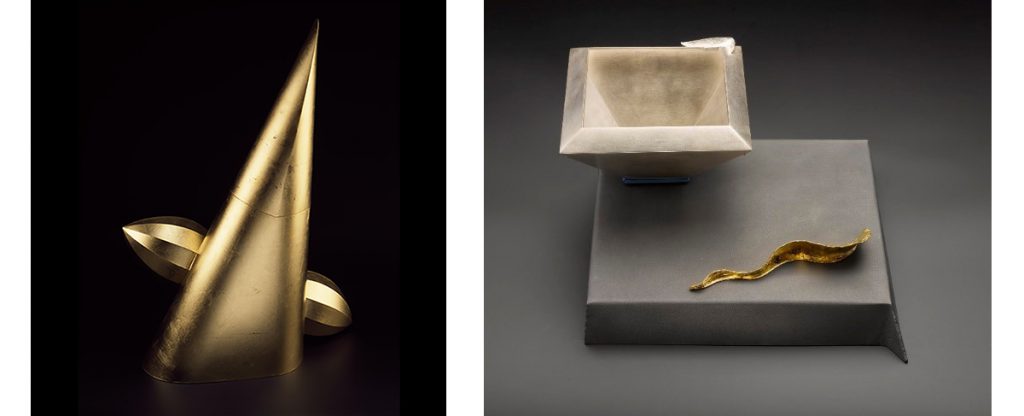
We also hold works by many of Simone’s friends in metal, such as John Creed, who she has been friends with for over 30 years. John himself has also worked with the Museum’s archaeologists and collections to rediscover the past, creating a replica of the Carnyx war horn. A master silversmith since the 1960’s and blacksmith since the late 1980’s, Creed has been based in Glasgow since the early 1970’s, and taught at the Glasgow School of Art for 24 years. He is internationally renowned for his innovative approach to metalsmithing; often employing a combination of materials with a range of techniques from traditional to the technologically innovative. And creating works from small domestic pieces, to large scale public artworks.
Of all the pieces held by the Museum (we hold nearly 20 pieces by John in total, within both the Art & Design and Scottish History collections), I just adore these three boxes that are held within the store. Created in 1979, and inspired from an interest in tubing and the shapes that can occur at a bend, Creed says the boxes allowed him to explore his fascination in movement between the components of a design. They have a look of the industrial, you could even consider them Steampunk, though they were created long before this movement had an impact upon design. I always find they make me smile as if they have a subtle humour hidden within the finesse of their craftmanship.
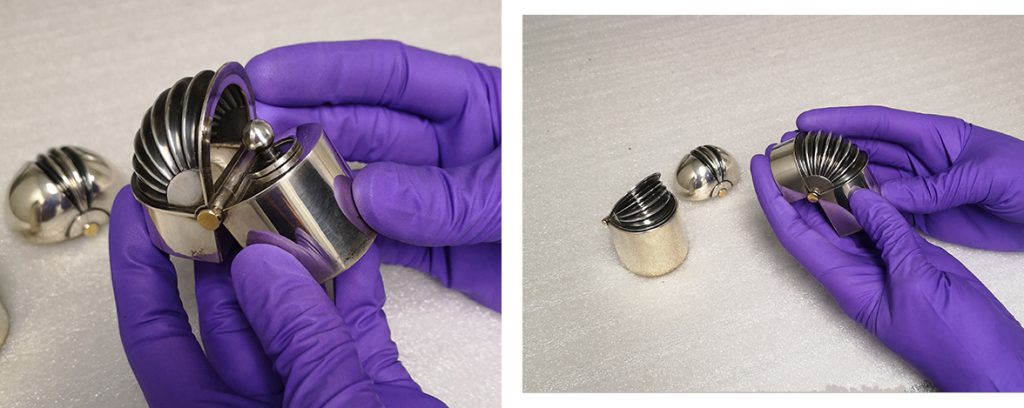
One of the pieces of Contemporary silver and metalwork that will always have a very special place in my heart – as it was one of the first works I helped acquire for the National Collection – is Slanted Red Sand Bowl by the London based Israeli metalsmith Adi Toch.
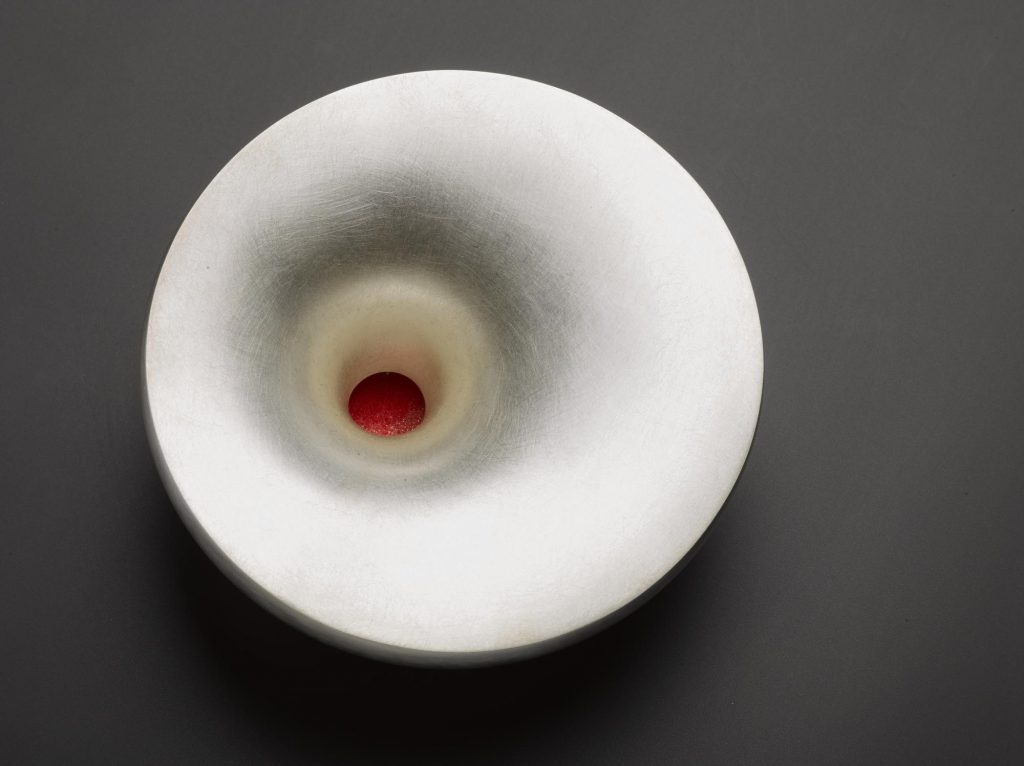
Considered as “one of the most exciting young makers” by my fellow Glenmorangie Commission judge Corinne Julius, Adi’s practice as a metalsmith centres on making engaging vessels and containers that investigate colour, movement, sound and tactility. She also notably graduated from The Cass (London Metropolitan University) and is one of the generation of new metal artists that were taught by Simone who are having an international impact upon the sector today. Adi’s works are very intimate. You are drawn to, and have to engage with, them. She encourages you to hold them within your hands, rock them back and forth to hear the whispering of the grains or beads within – to speak or even sing to them, as Corrinne once did at Collect a few years ago. See yourself reflected in their surface. And exclaim at the beauty of the patination she is able to achieve through her experimental processes.
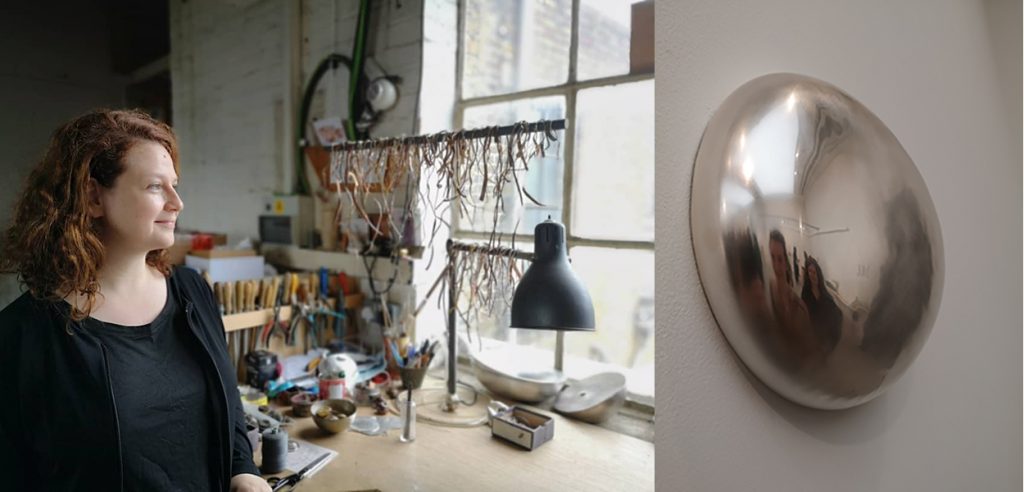
Simone ten Hompel has interacted with so many Contemporary silver and metalsmiths over her 45-year career in the sector. Be that by being taught by, or developing friendships with, and also in educating others herself. It is easy to find links to her within the collection held by National Museums Scotland and to understand why she has become so significant in the Craft of metalsmithing.
I hoped you enjoyed seeing some of my highlights of the Collection. With thanks to the Glenmorangie Commission, National Museums Scotland will soon be unveiling Simone’s new artwork, which will come to sit amongst these pieces of metal art within National Museums Scotland’s collection –highlighting the sector’s continuing development within challenging expectations of this age-old craft.
